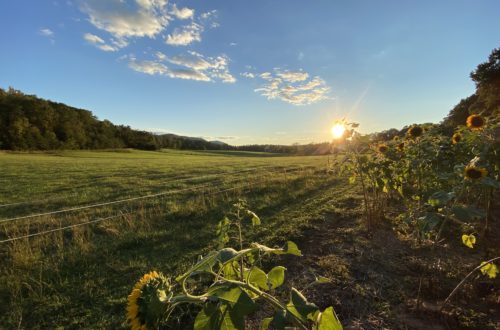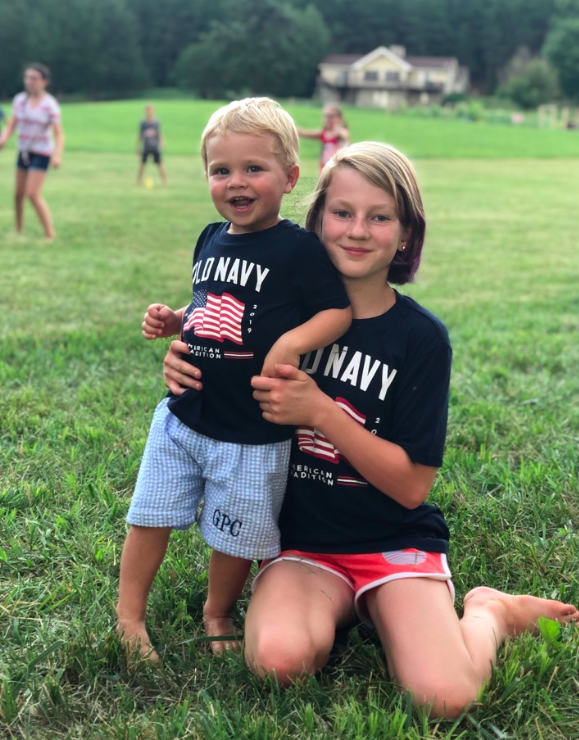Wildwood: Creative Narration
I don’t give my children tests.
Well, at least not my elementary student children.
They don’t receive a multiple choice, true/false, fill in the blank piece of paper when they complete a chapter about Columbus or learn about narwhals in their science book.
(They don’t ever really use textbooks either, but that’s another story.)
As an advocate of a Charlotte Mason education, we employ the use of narration in our daily school routine.
Narration means just what it sounds like.
We read a chapter, learn about a subject, finish a novel – and when we do that – I ask the kids to tell me the story back in their own words.
I might give a few leading suggestions, such as “Tell me all you can remember about Benjamin Franklin’s childhood” or “Explain the differences between an ocean and a sea” but usually I just ask them, “What happened in this book?”
And when they open their mouths and tell me, that’s narration.
We do this simple form of narration frequently, as a matter of course. Like an ongoing conversation. (Which is all it really is, of course.)
But there’s something very powerful about a child being able to put into their own words what an author has expressed.
When they can do that, re-tell a story, then that story is so much more likely to become a part of their memory.
At least once a week we also do written narrations.
(Again, exactly as they sound. A written version of what happened in the story they read.)
And on Thursdays, we get to do what they would all agree to be their favorite form of narration — creative narration.
This varies drastically and ebbs and flows according to what craft supplies are available to us, how much time a particular Thursday allows us and what story we are attempting to narrate.
We’e made clay versions of the characters in a Roald Dahl novel. Created entire replicas of Jamestown with wooden blocks on the living room floor. Made dozens of clay miniature penguins after Mr. Popper’s Penguins. Recorded ourselves pretending to be characters from a novel. Created comic book-style cartoons depicting the scenes from Otto of the Silver Hand.
Last week, however, I had an appointment and the kids were going to be staying at home with their dad. After completing their lists of solo school work and chores, I assigned them their favorite creative narration task to date.
Re-create a scene from Robinson Crusoe using only Legos.
When I returned home the creations were awaiting my approval on the dining room table.
And I loved them!
First, Mr. Crusoe paddles across the ocean up to a remote shore.
(And a ninja peers at him in the background. One of these events is not factual, but I liked the ninja so I let it slide.)
Then Robinson sees the natives on the shore from his boat.
All in all – it was a great incentive to finish their school work and a project that they actually enjoyed!





5 Comments
hannaH
um…can i come over for narration thursdays? those are the kind of things i miss about school.
Gretchen
Awesome! I do not do much testing either………….just spelling and in their math book there is a "test" but I just let them try to do it always on their own and usually it is 100%. Let me just say I learn what things are from you, like there is a name for Narration……….did not know this……………but yes, I agree that this is a wonderful way to learn and we too incorporate it. I am going to have to use your creative idea though……….I like it. I have done story boxes and picture drawings but man, my kids would totally get into the lego designs!!! Your kiddos did a wonderful job, as always! 🙂
LaceyKeigley
I love that you naturally do the types of things I do without knowing their names. That's perfect organic teaching. It's lovely!
I am sure your boys would adore Lego creative time.
And we take Math tests too – Math is just weird for me so we follow the rules there! 🙂
Sally
does the whole crew work together in one creative narration? narration is the one area where I tend to swerve towards Waldorf more than CM (though I still do narration) — it seems that they can retell the story or what have you so much better the next day. Have you experienced this, and is this more of a "growing pain"? Ms. Mason has been right on with everything else, I feel bad second-guessing narration… so I have been stopping during a chapter, making the amount of information less, so it's maybe easier to narrate.
Thanks for sharing your homeschool with us — i really like the creative narration idea. Another Q that will make you either laugh, roll your eyes, or make some weird noise deep down in your throat: how do you work all the gang's different over the course of a day? I went there — I just asked how you schedule home learning. . . .
LaceyKeigley
Good questions …..
The whole crew kind of works together. We usually do the project at the same time, in the same location, with each kid having their own supplies. For example – we used clay to make the mini penguins. We all sat together but all the penguins looked different and everyone had to make their own.
What is the difference between Waldorf and CM narration? We do "next day" all the time – or next week. Or two weeks ago. It is seldom immediate – although sometimes it is. I love hearing what they retain weeks/days/months later.
Ha – scheduling! Do you mean the narration over the course of a day or everything? because everything – oh goodness – that would be a long response – but narration – I sometimes squeeze in with life – especially oral narration. As in – "Mosely – walk with me to the clothes line and while we take down laundry tell me about the Boxcar Children." And I schedule one day each week where I plan to listen to narration orally, one day written and one day creative. In my dream world – we would narrate every day. But I live somewhere else besides a dream world. Which means I have to say out loud and write down that at least once a week we will have a planned narration time.
Any more questions – my eyes aren't rolling and the only noise in my throat is the scratchy feeling I'm fighting off.